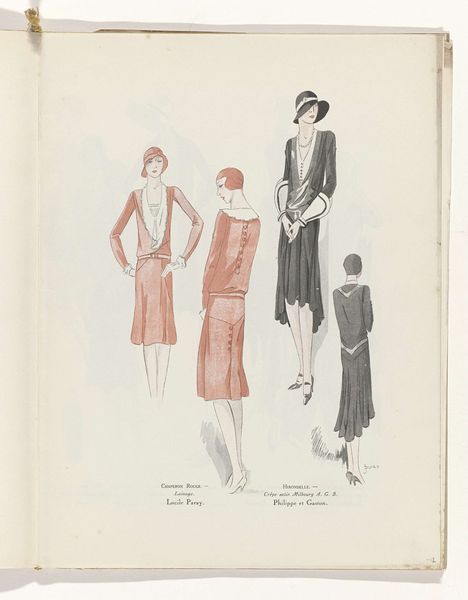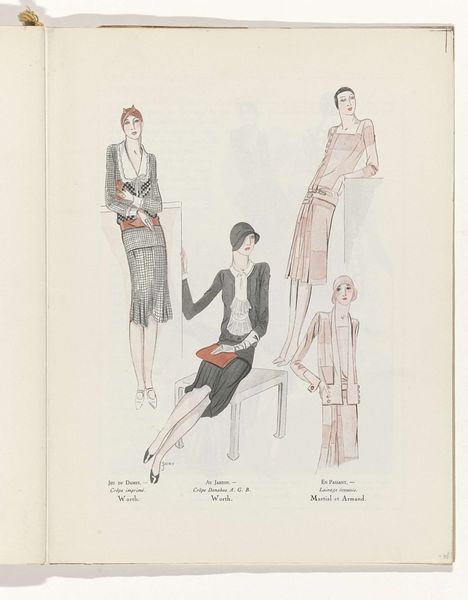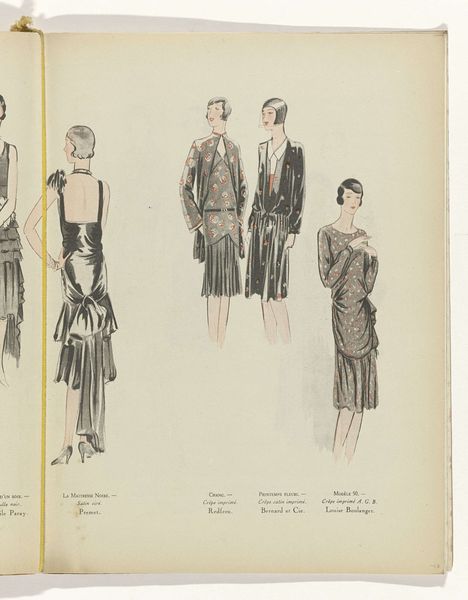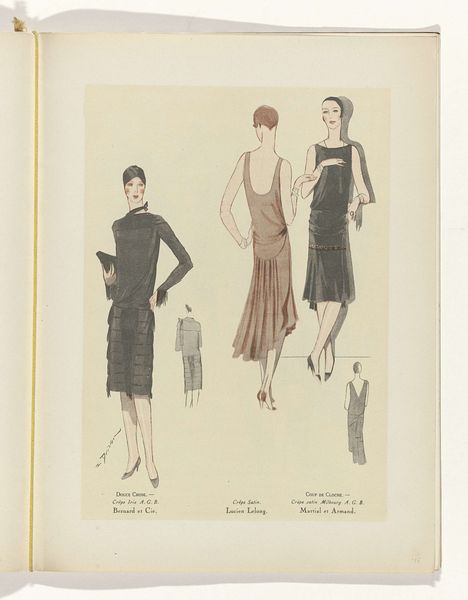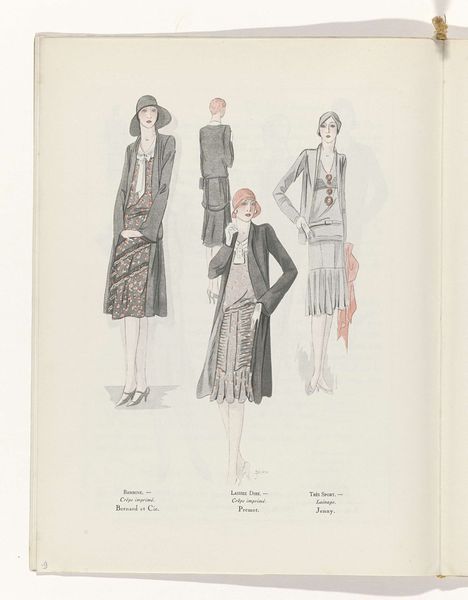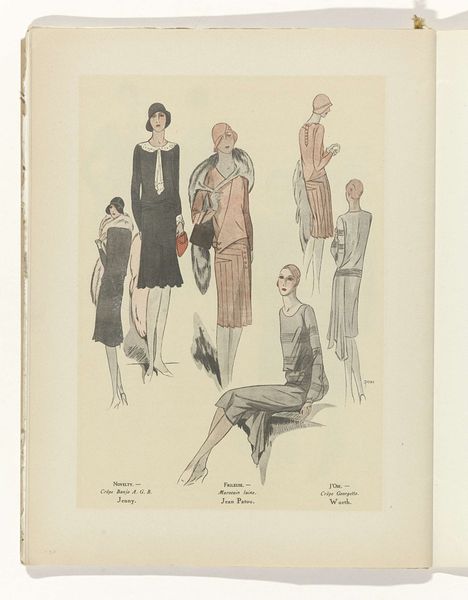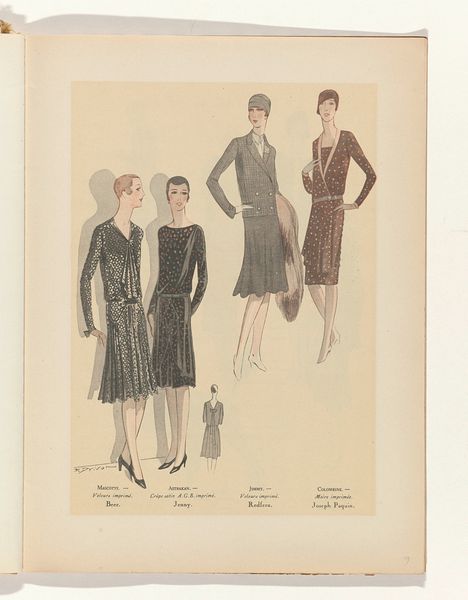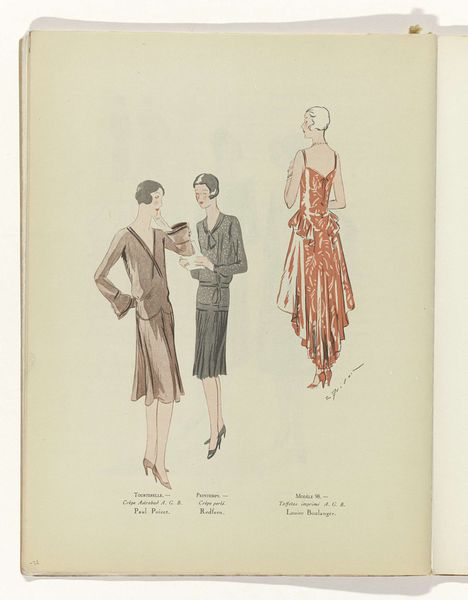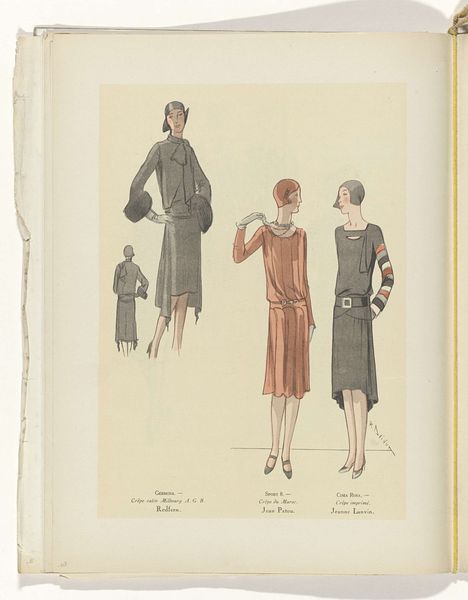
Art - Goût - Beauté, Feuillets de l' élégance féminine, Juin 1929, No. 106, 9e Année, p.14 1929
0:00
0:00
drawing, paper, ink, pencil
#
portrait
#
art-deco
#
drawing
#
figuration
#
paper
#
ink
#
pencil
Dimensions: height 315 mm, width 240 mm
Copyright: Rijks Museum: Open Domain
R. Drivon made this fashion plate, “Art - Goût - Beauté” in 1929, probably using pen and ink with stencils for the colour. Look at how the colours are subtly layered on the figures. The way the colours are feathered around the edges gives them a hazy, dreamlike quality. This reminds us that artmaking is a process of building up layers, whether physical or conceptual. The figures are drawn in a very simplified way, with flat planes of colour and minimal shading. It’s interesting how much information is conveyed with so little detail. The artist has focused on the shapes and lines of the clothing, capturing the essence of 1920s fashion. There is a tension between the linear qualities of the under drawing and the soft, muted colours of the dresses. Look at the subtle colour variation and detail in the pleated grey dress to the left, and the highlights on the legs of the seated figure on the right. This piece reminds me of other fashion illustrators, such as Erté, who also used simplified forms and flat colours. But Drivon’s work has a more understated quality, with a focus on elegance and sophistication rather than glamour. Art like this reminds us that beauty can be found in simplicity and restraint.
Comments
No comments
Be the first to comment and join the conversation on the ultimate creative platform.


